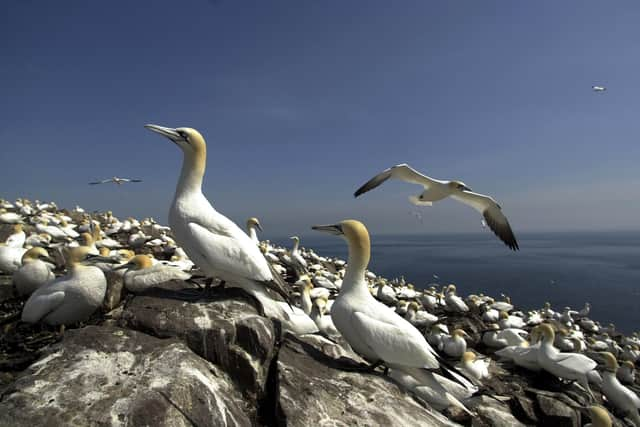Visits to seabird colonies on some Firth of Forth islands banned amid avian flu outbreak
and live on Freeview channel 276
Bass Rock, Craigleith, Inchmickery, Isle of May and Lamb and Fidra should all be off limits according to the agency.
The number of gannets has decreased by 25% in Shetland and great skua in Orkney by 85% as a result of the avian flu outbreak, NatureScot said.
Advertisement
Hide AdAdvertisement
Hide AdIt has advised the public that landings will stop to allow seabirds the best possible chance to survive and recover from the current severe outbreak.


Visitors will still be able to take boat trips to seabird colonies to view summer spectacles but will not be able to come ashore.
The virus is widespread across Scotland, with positive cases recorded in Shetland, Orkney, Outer and Inner Hebrides, Highland, Moray, Aberdeenshire, Angus, Fife, East Lothian and Scottish Borders.
Seabird colonies at Noss, Hermaness, Hoy, St Kilda, Troup Head, Handa, Bass Rock and St Abbs have all been badly affected.
Advertisement
Hide AdAdvertisement
Hide AdGreat skuas, gannets and guillemots have been hardest hit, while Great black-backed gulls, herring gulls, kittiwakes, Arctic terns, Sandwich terns, razorbills and puffins have also tested positive.
The situation will be under constant review and restrictions will be lifted as soon as possible, once the birds have finished breeding.
Rapid assessments were undertaken of all island special protection areas designated for breeding seabirds such as gannets and guillemots.
The measure is the latest in response to growing concern over the spread and impact of the current H5N1 strain of avian flu, particularly in seabird colonies.
Advertisement
Hide AdAdvertisement
Hide AdEileen Stuart, NatureScot’s deputy director of Nature & Climate Change, said restricting visits was “not an easy decision” but concerns about avian flu are on the rise.
She added: “Many of our Scottish islands are a haven for internationally important bird populations.
“With the avian flu crisis evolving so quickly, we have to respond to reduce the spread of this virulent disease. Tragically, this destructive disease could be with us for some time to come.
“In Scotland, with the new task force announced last week, we and our partners are committed to sharing our expertise and co-ordinating action on the ground.”
Advertisement
Hide AdAdvertisement
Hide AdNatureScot are leading a new task force to co-ordinate a response to the avian flue crisis in Scotland.
As of this week, the following islands have been advised to stop public landings until chicks have fledged.
Until the end of August for breeding puffins, Arctic skuas and Arctic terns:
• Orkney – Calf of Eday, Swona & Muckle Skerry
• Firth of Forth – Craigleith, Inchmickery, Isle of May
Until mid-September for breeding great skuas, common terns, cormorants and fulmars:
• Shetland – Noss
• Argyll – Glas Eileanan (Sound of Mull)
• Firth of Forth – Lamb and Fidra
Advertisement
Hide AdAdvertisement
Hide AdUntil mid-October for breeding gannets, storm-petrels and Manx shearwaters:
• Shetland – Ramna Stacks & Gruney
• Western Isles – Flannan Isles, North Rona & Sula Sgeir, St Kilda (Dun, Soay, Boreray, Stac an Armin and Stac Li – excluding the main island of Hirta)
• Highland – Priest Island
• Argyll – Treshnish Isles
• Firth of Forth – Bass Rock
